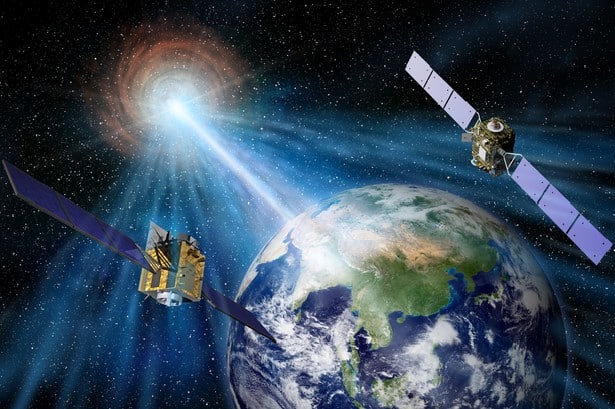This Day, That Year – June 11
Sun 11 Jun 2023
This day in history we feature the Fermi Gamma-ray Space Telescope. A space observatory being used to perform gamma-ray astronomy was launched into orbit on this day in 2008.
Trivia – Fermi Gamma-ray Space Telescope
The Fermi Gamma-ray Space Telescope, formerly called the Gamma-ray Large Area Space Telescope (GLAST). Its main instrument is the Large Area Telescope (LAT), with which astronomers mostly intend to perform an all-sky survey studying astrophysical and cosmological phenomena such as active galactic nuclei, pulsars, other high-energy sources and dark matter. Another instrument aboard Fermi, the Gamma-ray Burst Monitor (GBM; formerly GLAST Burst Monitor), is being used to study gamma-ray bursts and solar flares.
Related read – NASA holds public event examining UFO sightings for the first time
Fermi, named for high-energy physics pioneer Enrico Fermi, was launched on 11 June 2008 at 16:05 UTC aboard a Delta II 7920-H rocket. The mission is a joint venture of NASA, the United States Department of Energy, and government agencies in France, Germany, Italy, Japan, and Sweden, becoming the most sensitive gamma-ray telescope on orbit, succeeding INTEGRAL. The project is a recognized CERN experiment (RE7). NASA’s Alan Stern, associate administrator for Science at NASA Headquarters, launched a public competition 7 February 2008, closing 31 March 2008, to rename GLAST in a way that would “capture the excitement of GLAST’s mission and call attention to gamma-ray and high-energy astronomy … something memorable to commemorate this spectacular new astronomy mission … a name that is catchy, easy to say and will help make the satellite and its mission a topic of dinner table and classroom discussion”. Fermi gained its new name in 2008: On 26 August 2008, GLAST was renamed the “Fermi Gamma-ray Space Telescope” in honor of Enrico Fermi, a pioneer in high-energy physics. General Dynamics Advanced Information Systems in Gilbert, Arizona, designed and built the spacecraft that carries the instruments. It travels in a low, circular orbit with a period of about 95 minutes. Its normal mode of operation maintains its orientation so that the instruments will look away from the Earth, with a “rocking” motion to equalize the coverage of the sky. The view of the instruments will sweep out across most of the sky about 16 times per day. The spacecraft can also maintain an orientation that points to a chosen target. Both science instruments underwent environmental testing, including vibration, vacuum, and high and low temperatures to ensure that they can withstand the stresses of launch and continue to operate in space. They were integrated with the spacecraft at the General Dynamics ASCENT facility in Gilbert, Arizona. Data from the instruments are available to the public through the Fermi Science Support Center web site. Software for analyzing the data is also available. NASA designed the mission with a five-year lifetime, with a goal of ten years of operations.
Source – Wikipedia

 May 01 2024
May 01 2024













